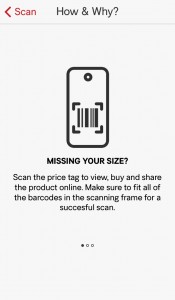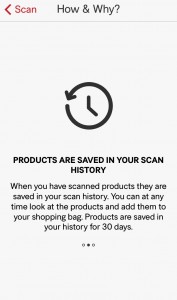It is no surprise that in the fast developing digital environment there is a great demand for fashion at our fingertips. Mobile apps are a highly significant development in mobile communications, indeed all digital communications, as they highlight a change in the method of delivering interactive services and content via mobile phones (Chaffey and Ellis-Chadwick, 2012). In our digital environment more and more people spend infinite amounts of time on their mobile devices enabling them to browse for share and buy products.
According to Ratcliff @ Econsultancy (2015), there are 7 reasons why retailers should have an app:
- The competition has one
- Some people just love using apps
- Increased conversion – According to an ABI Research survey 40% of US respondents who had downloaded a retailer app said they bought more of that brand’s products.
- You can communicate with your customers instantly – you can use push notifications to immediately inform users of information updates or relevant news
- Ease of payment – Smartphones in built technology can allow users to pay in-store instantly (Apple are currently doing this)
- Improving in-store experiences
- Extra value
The goal of apps for most organisations will be to increase awareness and sales, although the latter will generally be limited to publishers or specialist software developers (Chaffey and Ellis-Chadwick, 2012). Specifically for fashion retailers with fast turn around, apps enable them to communicate new products and offers directly to their customers. Furthermore this selling channel is convenient, user friendly and more personal for the customer.
H&M launched their first transactional app in 2013. As a user I find the app to have good usability and interaction and often use it instead of the website to purchase clothes. The scan feature of the app is particularly interesting (See the print screen images below). It allows users to scan the barcode of an item in-store in order to view, buy and share the product online. For retailers, these smartphone-enabled mobile apps represent a growing opportunity in the omni-channel (Taylor and Levin, 2014). This is important as fashion savvy consumers will want to take advantage of all channels when buying their products.
Images from H&M app (2015)
New image recognition apps are being noticed by fashion retailers (Hickey, 2014). Apps such as SnapFashion and Style-eyes allow users to upload images of items they like and the app then searches for the item letting you know where to buy the item or similar alternatives. Although these types of apps are not always 100% effective, they do present an opportunity for fashion brands to adopt a similar feature linking to items in their catalogue.
However there are drawbacks of launching a mobile campaign. Apps need regular maintenance and updating in order to ensure they remain interesting, attractive and relevant. Additionally, Moth @ Econsultancy (2013) states Data from our new Mobile Commerce Compendium shows that, more than anything else, consumers want to be rewarded with exclusive offers if they download a retail app, with 38% of respondents selecting this as an important feature for smartphone apps.
Mobile Apps have quickly become an essential part of all major fashion retailers customer offering and look to be a permanent fixture in the future ecommerce relationship between seller and buyer. The App design must reflect the image of the fashion retailer if it is to remain an attractive and fun shopping experience.
REFERENCES
- Ratcliff, C. (2015). Seven reasons why retailers should have an app and six why they shouldn’t Econsultancy (online) (6th March 2015) Available at: https://econsultancy.com/blog/66133-seven-reasons-why-retailers-should-have-an-app-and-six-why-they-shouldn-t/
- Moth, D. (2013). Exclusive offers and in-app purchasing most most important features for mobile apps: report Econsultancy (online) (6th March 2015) Available at: https://econsultancy.com/blog/63023-exclusive-offers-and-in-app-purchasing-most-important-features-for-mobile-apps-report
- Taylor, G. D. Levin, M. (2014). Predicting mobile app usage for purchasing and information sharing International Journal of Retail & Distribution Management Vol. 42 Iss 8 pp. 759 – 774
- Hickey, S. (2014). Fashion retailers eye up image-recognition apps for smartphones The Guardian (online) (9th March 2015) Available at: http://www.theguardian.com/business/2014/apr/20/fashion-retailers-image-recognition-apps-smartphones
- Chaffey, D. and Ellis-Chadwick. 2012. Digital Marketing – Strategy, Implementation and Practice. Harlow: Pearson




